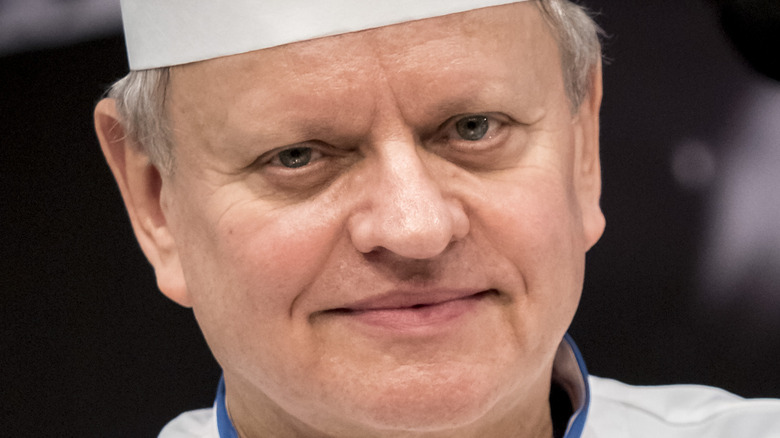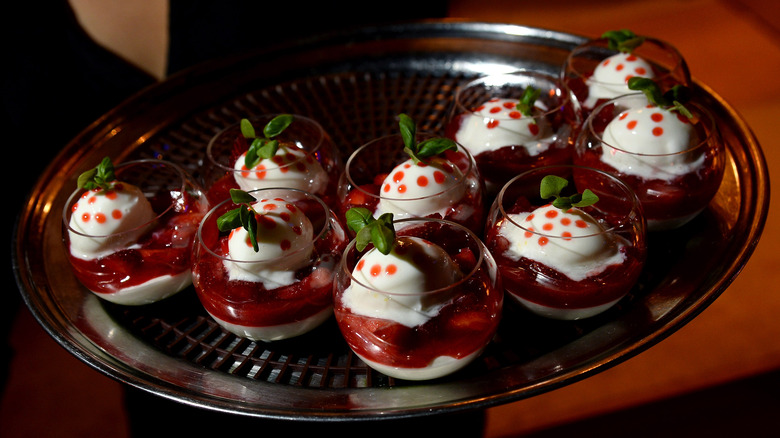The Painstaking Process Behind Joël Robuchon's Iconic Sauce Dots
The Gault et Millau cooking guide named Chef Joël Robuchon the "chef of the century" in 1990, and his perfectionistic tendencies helped him earn over 30 Michelin stars during his career, notes Reuters. The Washington Free Beacon attributes Robuchon's dedication to details — or, arguably, his obsession — for his ability to redefine the concept of fine dining, as customers eagerly lined up to pay thousands of dollars for tasting menus decided upon by the chef.
The Montreal Gazette describes Robuchon's plating style as something similar to still life art, providing the example of a lobster salad circled by hundreds of little dots of edible sauce. Artful sauce dots had become a flag of a certain kind of pretentious cuisine, notes NPR, but there's no questioning that these round designs add aesthetic appeal to plated meals. Robuchon became known for this effect, as his designs weren't just any dots haphazardly placed but perfectly scaled and intentionally selected features.
A decorative standard
Le Bernardin's Eric Ripert remembers his time working for Robuchon in which he was stationed to place perfectly sized dots equally on plates (via Grub Street). In Ripert's memoir "32 Yolks," he recounts what he calls a nightmarish experience: "If you were to take out a pen and a piece of paper right now and try to make a circle of 90 perfect, evenly spaced dots — even if you are a good artist, even if you take your time — I could look at the paper and tell you where Robuchon would find fault" (per Washington Examiner). Ripert explains that while most sauce begins as a cold, thick, and workable substance, it gradually warms up and becomes increasingly difficult to use.
Yet these dots became associated with Robuchon's signature dishes — caviar surrounded by 72 dots of creamed cauliflower or chocolate mousse decorated with circles of apricot curd and raspberry puree — and the dotty decorations could be found encircling dishes and highlighting ingredients, notes Eater. Now, artful dots of sauces and creams can be found in many restaurants, NPR notes, as squeeze bottles have made chef's jobs easier and a plating standard has been set, largely thanks to Robuchon.

